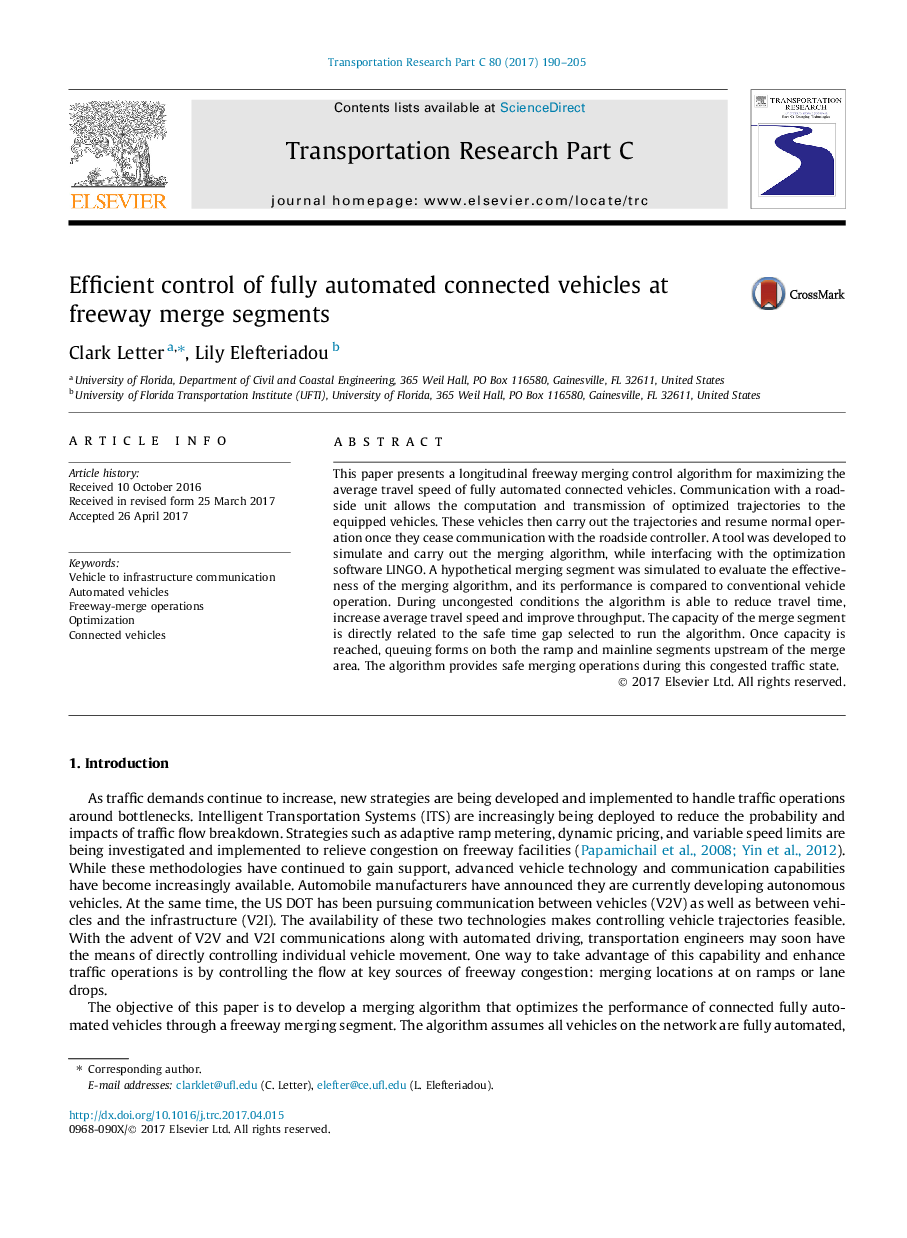| Article ID | Journal | Published Year | Pages | File Type |
|---|---|---|---|---|
| 4968446 | Transportation Research Part C: Emerging Technologies | 2017 | 16 Pages |
Abstract
This paper presents a longitudinal freeway merging control algorithm for maximizing the average travel speed of fully automated connected vehicles. Communication with a roadside unit allows the computation and transmission of optimized trajectories to the equipped vehicles. These vehicles then carry out the trajectories and resume normal operation once they cease communication with the roadside controller. A tool was developed to simulate and carry out the merging algorithm, while interfacing with the optimization software LINGO. A hypothetical merging segment was simulated to evaluate the effectiveness of the merging algorithm, and its performance is compared to conventional vehicle operation. During uncongested conditions the algorithm is able to reduce travel time, increase average travel speed and improve throughput. The capacity of the merge segment is directly related to the safe time gap selected to run the algorithm. Once capacity is reached, queuing forms on both the ramp and mainline segments upstream of the merge area. The algorithm provides safe merging operations during this congested traffic state.
Related Topics
Physical Sciences and Engineering
Computer Science
Computer Science Applications
Authors
Clark Letter, Lily Elefteriadou,
